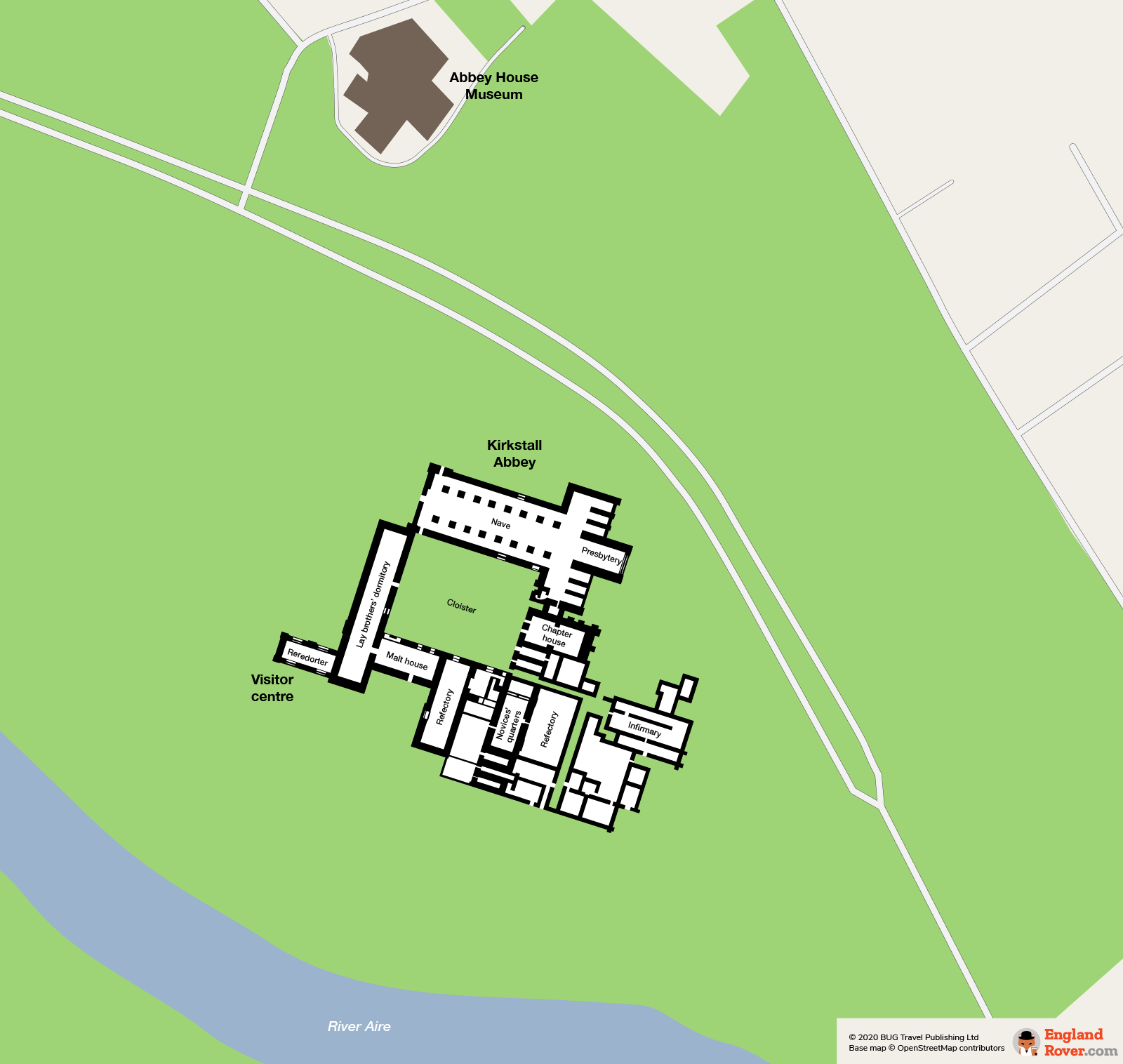Kirkstall Abbey is a 12th-century Cistercian monastery in a suburban area around 5km (3 miles) northwest of Leeds city centre. The abbey ruins are surrounded by parkland backing onto the River Aire.
The abbey was founded in 1152 and operated for around 400 years until it was dissolved by Henry VIII in November 1539 during the Dissolution of the Monasteries.
![The ruins of the 12th-century Kirkstall Abbey are set among parkland next to the River Aire, around 5km (3 miles) northwest of Leeds city centre. (Photo: Minda [CC BY-SA 3.0])](https://englandrover.com/wp-content/uploads/2020/11/kirkstall-abbey.jpg)

What to see at Kirkstall Abbey
It is a Grade I-listed building that has recently undergone a £5.5 million restoration project that included the construction of visitor centre that features interactive exhibits that chart Kirkstall Abbey’s history and depict the life of the monks who lived here.
Although Kirkstall Abbey is in ruins, there is quite a bit to explore here and the surrounding parkland backs onto the River Aire, making it a delightful spot to visit.
It follows a similar plan to many other English Cistercian monasteries, such as Fountains Abbey and Rievaulx Abbey. It is designed with a large church at one end and the monks’ and abbot’s quarters at the other end with these two zones separated by a cloister.

Visiting Kirkstall Abbey
Kirkstall Abbey is in Kirkstall, around 5km (3 miles) northwest of Leeds city centre. It is 10 minutes by bus, with buses running every 20 minutes, or a one-hour walk. Bus routes 33, 34 and the A1 Flyer run between the abbey and the city centre.
Many people combine a visit to Kirkstall Abbey with the Abbey House Museum, which is housed in the abbey’s former gatehouse, just a two-minute walk away, on the other side of Abbey Road.
Admission is free of charge, although there is a donation box.
An outdoor market is held here on the last weekend of each month between March and November.
There is an on-site gift shop plus a cafe and there is a nice pub, the Vesper Gate, around a five-minute walk along Abbey Road.
Allow around an hour to visit the abbey, or a half-day if you combine it with the Abbey House Museum.


There are no comments yet.